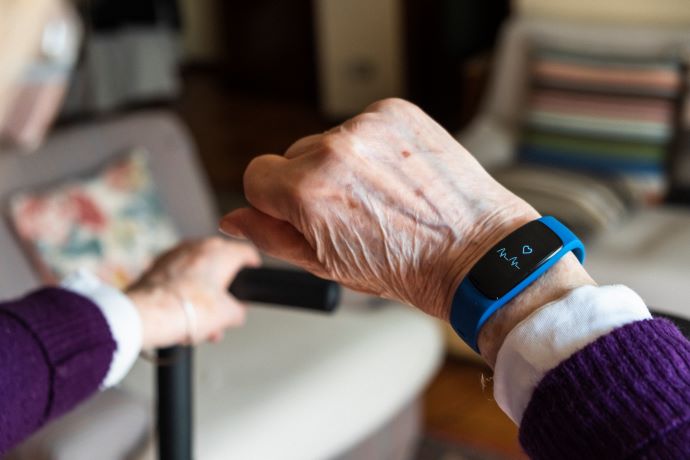Healthcare Wearables Can Help Increase Physical Activity Among Seniors
The share of older adults who reported using wearable devices, though small, had higher physical activity levels than their peers, per a new study.

Source: Getty Images
- Though the adoption of wearable devices is low among older adults, their use can help boost physical activity within this population, new research shows.
Wearable device development is skyrocketing, with one estimate showing that nearly 440 million new health and wellness wearables will be hitting the global market by 2024. Consequently, researchers are increasingly focused on examining the utility of wearable devices in healthcare interventions, particularly those aimed at improving the health of seniors.
The new study, published in Cureus, aimed to assess the relationship between wearable device use and physical activity levels among older adults in the US.
Researchers gathered data from the 2019 and 2020 Health Information National Trends Survey (HINTS). They included responses from 3,310 older adults in the study, focusing on wearable device use and its impact on weekly physical activity levels, resistance training, and sedentary time.
Of the 3,310 survey respondents, only 498 participants (14.4 percent) stated that they had used a wearable device for the past year. About 65 percent reported daily or almost daily use of these devices, and 76.9 percent said they were willing to share health data from their devices with their healthcare providers.
While there was no significant difference in wearable device use by gender, insured individuals, White and Black populations, and those from households with an annual income of at least $75,000 were more likely to use the devices. In addition, about 14.16 percent of wearable device users had comorbidities.
"While there is some evidence to support the increasing uptake and popularity of digital technology among older adults nationally, it is also possible that barriers unique to older adults may account for their lower rates of [wearable device] adoption relative to the general population," the study authors wrote.
The study revealed that older adults who used wearable devices were more likely to meet national guidelines for weekly levels of physical activity and resistance strength training compared with their peers who did not use wearables.
But, there was no statistically significant difference in sedentary levels in the previous seven days between older adults who used wearables and those who did not.
The study also shows that senior wearable device users with chronic diseases were more likely to achieve nationally recommended weekly levels of resistance strength training than their counterparts who did not use the devices. But, daily sedentary and weekly physical activity levels were similar between older adults with chronic conditions who used wearable devices and those who did not.
"Our results suggest the potential to utilize [wearable devices] as a tool to stimulate physical activity in chronically ill older adult populations," the researchers wrote.
They concluded that there is a need to encourage wearable device adoption and use among older adults, and future research should examine the factors impacting these trends.
The study aligns with previous research showing low utilization of wearables among populations that could benefit from their use.
According to a study published in June, fewer than 20 percent of cardiovascular disease (CVD) patients use wearable devices.
The research team used data from HINTS, scaling the total US adult population and those who had or were at risk for CVD to the HINTS population.
They found that 17.7 percent of US adults with CVD and 25.5 percent of those at risk of developing CVD used wearables. In comparison, 29 percent of the total US population used wearables.
